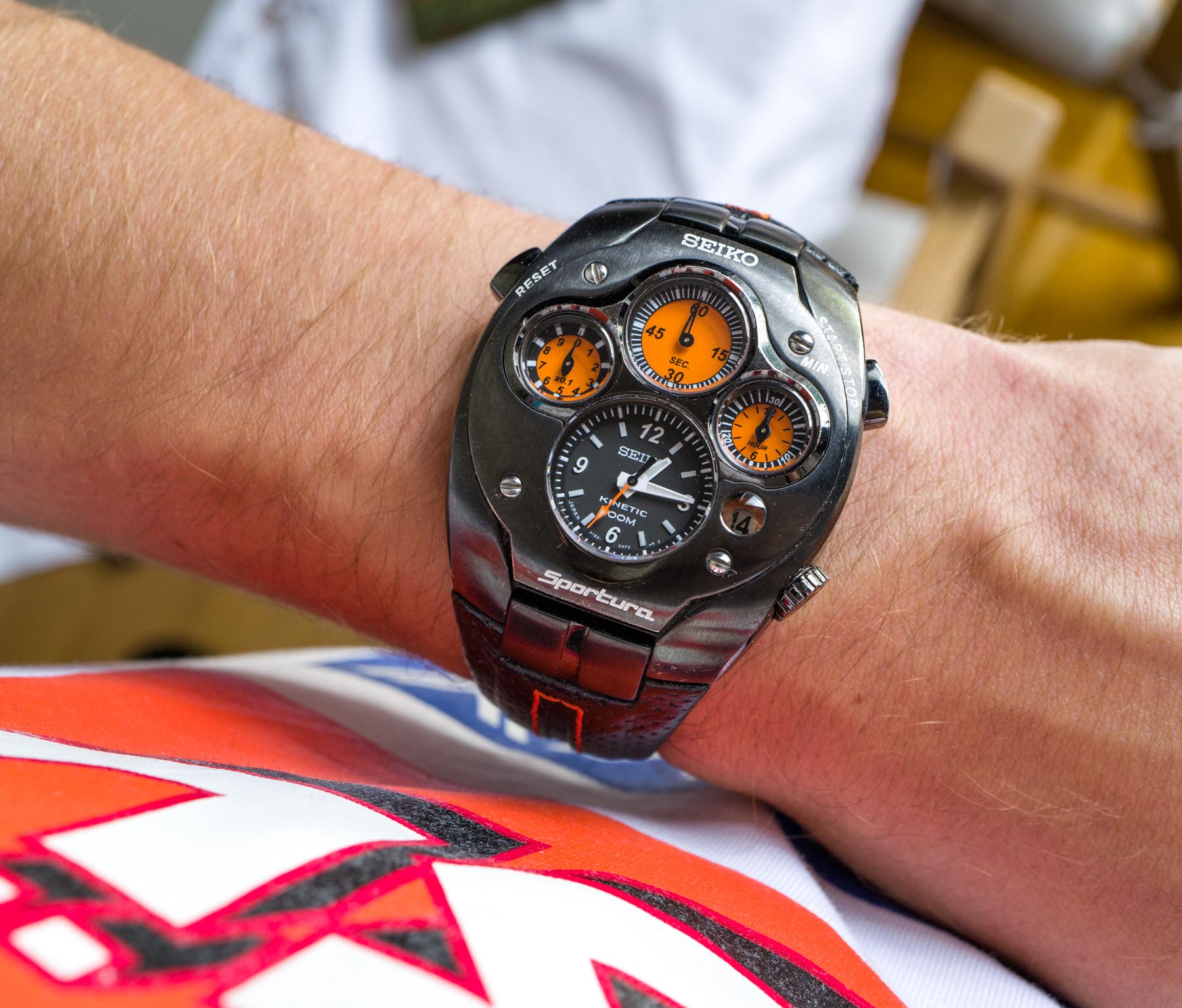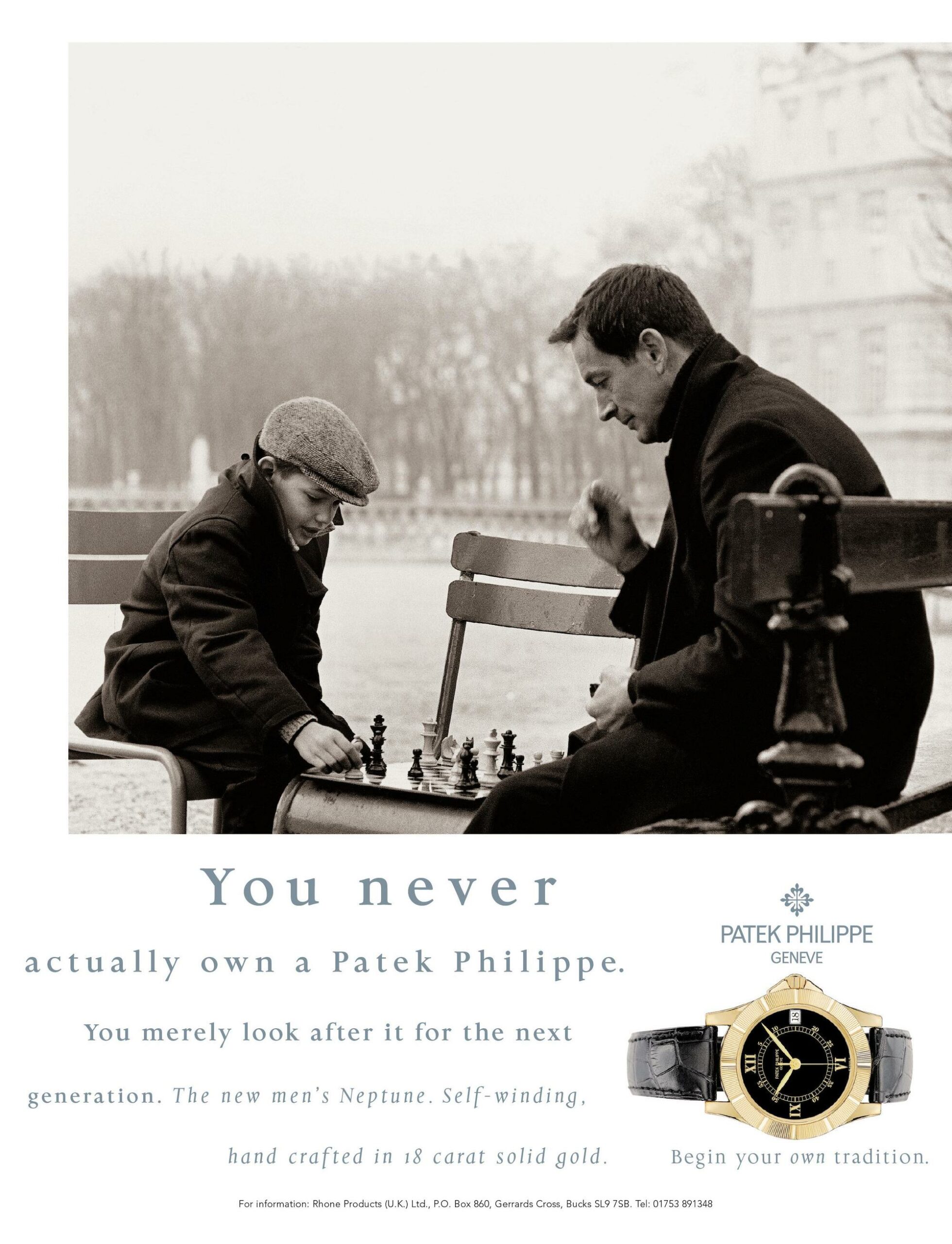In 1996, Patek Philippe introduced a new campaign that read “You Never Actually Own A Patek Philippe, You Merely Look After It For The Next Generation.” The watch industry and some of its marketing and sales practices have triggered me a number of times over the last decade, but this particular ad, I distinctly remember, was the first that irked me, long before I entered the industry. Strangely, today, it rhymes with a greater issue in watch design, watch buying, and watch collecting and so, instead of a neurotic outburst on condescension in Swiss luxury watch brand marketing, let me tell you why you keep buying the wrong watch.
First, a brief on that campaign, because it is a rarely discussed, yet influential component of modern luxury watch history. Patek Philippe seemed to have wisely recognized early on that the post-quartz crisis luxury watch market was brimming with wealthy customers looking to buy their first expensive mechanical watch, either in decades or, indeed, ever. Many of these customers, they realized, were insecure because they had been exposed to very little in-depth watch knowledge and analysis. Importantly, forums, blogs, vlogs, for they had not yet been invented, were not on hand to provide independent and verifiable answers to a novice customer’s questions. Therefore, marketing and brand image could make an all the more effective impact.
Well aware, some brands had this hunch that they should imply that it isn’t their watch that should grow up to being worthy of the customer — instead, it is the customer that should want to feel worthy of owning said product. It wasn’t just Patek Philippe with that opening line. Rolex famously ran its “If You Were…” followed by lofty statements, as in if you were negotiating in Geneva’s Palais des Nations, taming oil well fires, racing the fastest sailboats in regattas, then you would wear a Rolex. Mind you, all those are actual examples. Never mind that the majority of Rolex customers have by all probability been hard-working folks with more or less perfectly normal lives given that incomparably more of the well-heeled white- and blue collar workers are buying Rolex watches than do diplomats, oil rig firemen, regatta racers, or vulcanologists. Thankfully, this tactic on luxury watch marketing has been recalibrated over the years, but how and why that happened we’ll discuss at another time because we have a more important matter on our hands today.

Although the “You Never Actually Own A Patek Philippe” tagline is still with us, strangely, and if I may say, sadly, we have seen an ever-growing group of customers follow it almost literally, from the moment of choosing their next purchase to the second they sell it.
Here’s the rhyme. Although the “You Never Actually Own A Patek Philippe” tagline is still with us, strangely, and if I may say, sadly, we have seen an ever-growing group of customers follow it almost literally, from the moment of contemplating their next purchase to the second they sell it. It’s in the comments sections all over the horological corner of the Web, in the private emails and direct messages that we receive, and in the stories boutique sales staff tell us. As it stands, a staggeringly high portion of the current luxury watch buyer base out there refuses to buy a watch they are not absolutely sure will have strong appeal on the used watch market. In other words, folks today want to buy the specification that will appeal not just to them, and maybe some others, but to a vast pool of potential subsequent owners — to somebody they don’t know or care about — and yet the watch is supposed to be guaranteed to tickle an unknown customer’s fancy so that its resale probability and value are high. A strange twist to this story, let’s not forget, is that the watch we are often talking about is yet to be purchased by the first owner.

You don’t need to turn the wheels of time back too much to recall how used luxury watches used to be priced like other used items normally are — at a severe discount from their original purchase price. Since then, it happened that not just a few obscure, difficult-to-identify, highly collectible references, but almost every single model of the biggest brand in the industry, Rolex, can be used and then sold for their original cost, and often many times over that. The same, albeit over much smaller quantities, has happened with Audemars Piguet, Patek Philippe, and Richard Mille watches, a phenomenon highlighted by ongoing coverage by the general media. The remarkable attention the sky-high resale values of these watches received has severely distorted the public’s views and expectations on the resale value of, well, basically all other luxury watches.




